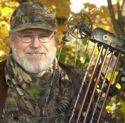This is the first of a two-part series on the comeback of America’s national symbol.
The Bald Eagle’s comeback from the brink of extinction is one of our country’s greatest conservation success stories.
In Kentucky today there are more eagle habitat, and the number of nesting pairs of eagles may actually be higher than during the late 18th century, when explorers, long hunters and settlers first came here. The distribution and abundance of the Bald Eagle (Haliaeetus leucocephalus) in early Kentucky is unknown, but it can be assumed the big raptors nested along many of the state’s major rivers.
According to the U.S. Fish and Wildlife Service, the population in America may have been as high as 100,000 when the Bald Eagle was adopted as the national symbol in 1782. The Bald Eagle is the only eagle unique to North America, a native species that is a year-round resident in Kentucky.

Bald Eagle Numbers Decline
The first major decline of the species is likely to have started in the mid-to-late 1800s, coinciding with the lower numbers of waterfowl and other prey, because of human settlement pressures, subsistence hunting, and market hunting. Passage of the Lacey Act in 1900 brought an end to market hunting, the illegal taking of wildlife, and interstate transportation for re-sale as food.
In Kentucky, there were just a handful of ornithological accounts of nesting eagles from the mid-19th to the early 20th centuries, including one by naturalist John James Audubon (1785-1851), who spent 14 years in Kentucky. Audubon studied birdlife at the Falls of the Ohio, and wandered the big river bottoms and wetlands in the western part of the state, when he lived in Red Banks, later named Henderson.
Brainard Palmer-Ball Jr. wrote in The Kentucky Breeding Bird Atlas “as floodplain wetlands were drained and cleared for agricultural use during the first half of the early 20th century, numbers of nesting eagles declined.”
By 1960 it was believed that no more than 10 nesting pairs remained along the Mississippi River, from the mouth of the Ohio River downstream to near Hickman, Kentucky.
There had been no verified reports of successful nesting since the 1940s.
Nationwide, the number of nesting pairs of Bald Eagles was at an all-time low. An Audubon Society survey of the Lower 48 states in the early 1960s found just 417.
America’s national symbol was clearly on the brink of extinction.
While habitat alternation, and wanton shootings were suspected as factors in the population declines, the real culprit was probably Dichlorodiphenyltrichloroethane (DDT), a colorless, crystalline, tasteless, and almost odorless agricultural insecticide that came into wide use after World War II. The persistent organic pesticide worked its way up the food chain, resulting in adult eagles receiving high concentrations that crippled reproduction.
DDT interfered with the eagle’s calcium metabolism, making them sterile or unable to lay healthy eggs. Their thin-shelled eggs were brittle, and cracked during incubation, causing the loss of the entire clutch.
Species Recovery Begins
Fifty years ago, in 1967, the Bald Eagle was placed on the endangered species list. That designation granted protection to its nesting sites, and important feeding and roost sites. In 1972, DDT was banned. Those two factors set the stage for the comeback of the species, in Kentucky, and throughout the Lower 48 states.
Active restoration programs were started by state and federal wildlife agencies, and states began surveys conducted by biologists and members of conservation groups. These annual surveys were aggressive efforts to find as many eagles as possible, and monitor nests being built.
Eagle nests are typically in remote areas, far from human activity, in areas difficult to access. Eventually, aerial surveys were conducted by fixed-wing aircraft and helicopters because it made it easier to find eagle nests, and count young.
“Eagles typically nest close to water where there’s a good supply of fish,” said Kate Slankard, an avian biologist with the Kentucky Department of Fish and Wildlife Resources (KDFWR). “They make their nests in tall, old trees or snags. They usually don’t like to be out in the open or too close to people.”
Hacking Jump Starts Bald Eagle Recovery in Kentucky
At Land Between the Lakes, the 170,000-acre national recreation area surrounded by Kentucky Lake and Lake Barkley, a hacking program that released young birds into the wild, jump started eagle recovery in western Kentucky, where populations had historically always been highest.
Biologists hacked 44 young eagles from 1980 to 1988, in hopes of reintroducing a nesting population. The release of eagles into their former range helped to boost population growth in the region.
The immature eagles were fitted with leg bands before they were released. The recovery of leg bands would provide important information about survival rates, the dispersal of birds from where they were fledged.
In the late 1980s, biologists discovered that eagles were nesting on the Ballard Wildlife Management Area (WMA), 35 miles west of Paducah.
The 8,014-acre area is ideal eagle habitat, including numerous large cypress-lined lakes, sloughs, and river bottom hardwoods along the Ohio River. Young were produced there for the first time in 1987 and by 1989 there were at least three active nests.
An eagle nest was found on nearby Swan Lake, near the mouth of the Ohio River in 1988. The 2,200-acre unit is now part of the 8,645-acre Boatwright WMA. In the decades to come there would be several active nests in the “lower bottoms” near Wickliffe, downriver of Ballard WMA.
By the end of the 1980s eagles were beginning to spread out across Kentucky.
During an annual winter census, eagles were found to have taken up residence on several major reservoirs in Kentucky, including Laurel River Lake, and Cave Run Lake, in Daniel Boone National Forest.
Nesting Pairs Increase During the 1990s
The 1990s were a decade of steady growth for Bald Eagle populations in Kentucky. Successful nesting had occurred at Ballard WMA, where two eaglets were fledged from five active eagle nests, and at LBL, where six eaglets were fledged from three active nests.
According to the U.S. Fish and Wildlife Service, the number of nesting pairs of Bald Eagles in Kentucky climbed from a low of five nesting pairs in 1990 to 23 nesting pairs in 2000, a whopping 360 percent increase.
The number had doubled in just one year between 1994 and 1995, from eight nesting pairs in 1994, to 16 nesting pairs in 1995.
Eagle recovery was making great strides.
Next week: Bald Eagle delisted, taken off federal endangered and threatened species list, continued population growth in Kentucky, and wintering eagles create tourism opportunities.
Art Lander Jr. is outdoors editor for NKyTribune and KyForward. He is a native Kentuckian, a graduate of Western Kentucky University and a life-long hunter, angler, gardener and nature enthusiast. He has worked as a newspaper columnist, magazine journalist and author and is a former staff writer for Kentucky Afield Magazine, editor of the annual Kentucky Hunting & Trapping Guide and Kentucky Spring Hunting Guide, and co-writer of the Kentucky Afield Outdoors newspaper column.






















